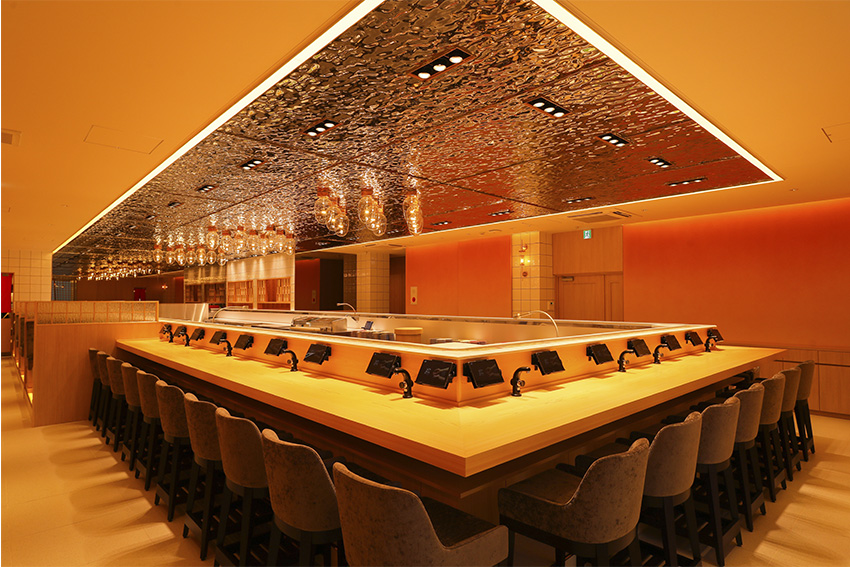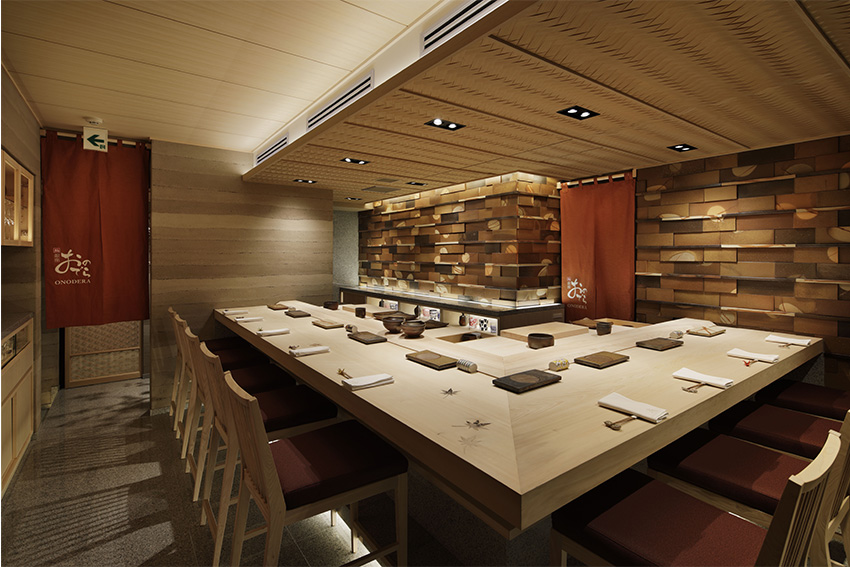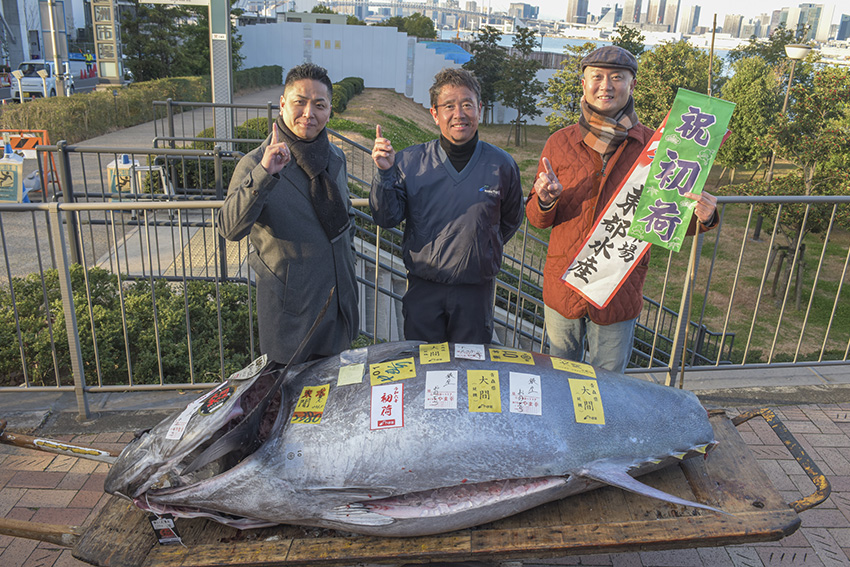Through its six pillar businesses of contract food services, food services, human resources & technology, medical, senior life, and sports, Onodera Food Service is bringing the quality of Japan to an international stage.

Over the past decade, Japanese food exports have reached new heights, reaching up to JPY 1.45 trillion in 2023. We’ve also seen this trend being reflected in international markets, with the number of Japanese restaurants rising 20% from 2021, with 2024 seeing almost 200,000 Japanese restaurants around the world. How do you account for this rising popularity and record levels of Japanese food exports?
There are four major reasons why washoku has been so popular recently. There has been a global trend towards people becoming more health conscious, and this has resulted in Japanese food having the limelight since it often features natural ingredients. There has also been a growing interest in Japanese culture, and when tourists go back to their home countries, they want to continue to enjoy Japanese cuisine. This has led to an increase in the number of Japanese restaurants being established outside of Japan.
Japanese cuisine is also known for its reliability and safety, particularly in the ingredients used and the cooking techniques employed. These cooking techniques and presentation styles have garnered significant attention globally.
The government has seen these numbers and set out to push them even higher. The target is to reach JPY 5 trillion in food exports by the end of the decade, with a focus on increasing the marketing of Japanese food around the world. Many, however, think of Japanese food as sushi or ramen. Your restaurants offer Japanese dishes outside of these two staple foods, bringing Japanese food that people may have never tried before. Which dishes do you believe has the best potential to appeal to international consumers looking to try more adventurous Japanese food? How can Japan achieve these lofty goals for food export set by the Japanese government?
Personally I think this JPY 5 trillion mark is achievable. Our company is actively pursuing overseas expansion through our chain of Ginza Onodera restaurants, offering customers teppanyaki, tempura, sushi, ramen, as well as many other dishes. Currently we are focusing on the US market but with the growing interest in Japanese food there are many other possible locations globally for us to expand to.


Inside a flagship Ginza Onodera restaurant
When we talk about international expansion, many different nations have different taste palettes. When we think about Japanese sushi, while it can be complex, its core is simple, and the ingredients speak for themselves. US sushi on the other hand, can be rather complicated, with a variety of flavor combinations merged together. To what extent must you adjust your dishes to match different regional tastes?
First and foremost, Japan is a uniquely positioned nation surrounded by nature. This means that we are blessed with bountiful natural ingredients, so the mindset of Japanese cooking has been to utilize these natural gifts so that their flavor stands out. Another key factor is the fact that overseas nations don’t have a culture of eating fish raw. I feel that the taste of the vegetables and the fish differs depending on the area and the nation. Shanghai, for example, has vegetables that are not good enough for our standards, so we saw in that location that adding flavor is necessary to enhance dishes. Likewise, fish in Western countries are often transported around and not kept fresh. It also tends to be farmed fish, so you have to add flavor.
It is important to adapt flavors to the local palates, but at the same time, we want to maintain the authenticity of Japanese cuisine, which is simple and highlights natural ingredients. Basically, it becomes a balancing act that varies from region to region, and this is key to our international operations. In terms of our conveyor belt sushi, there are so many variations that we can provide, so we are looking forward to providing local, authentic Japanese dishes to our customers.
Your company made recent headlines when, for the 5th consecutive year, you won the Hatsu-Seri or the Annual First Tuna auction, where you placed a JPY 140 million for a 238-kilogram bluefin tuna. In fact, in 2018, you achieved a record when you won the auction for a bluefin tuna weighing over 400 kilograms. How have you been able to leverage this success and attention around the world to help boost your business?
Acquiring the winning bid of the first auction for tuna each year is considered very good luck here in Japan. Being the winner of the auction means we are a very reliable company, and we are able to provide this “Good Luck” tuna to our customers. There is also the limelight we achieve, which will surely lead to new customers coming to our stores globally.

The 2024 Hatsu-Seri Bluefin Tuna, weighing 238kg
The price point for Japanese cuisine is very different between the West and here in Japan. Ramen shops in New York can cost over USD 22 for a single bowl or around JPY 3,600, whereas locally in Japan, a delicious bowl will cost about JPY 1,000. The profit margin is obviously very big. Ramen is more fast food, and with your restaurants, you are catering more to the upmarket customers. In the case of your business, does this price point apply in more upmarket restaurants, and how do you leverage that to your advantage?
The cost in Japan and the cost in the US is completely different. We calculate the cost incurred and develop a best pricing strategy from there. We set the price according to the local market, since the ingredients and the labor costs are different.
The decline of the Japanese population is posing a lot of challenges for companies, necessitating companies to look overseas. However, for Japanese food producers this is becoming more difficult because traditionally the largest market was China, accounting for 20% of exports in 2022. This number has now been wiped off the board with the Chinese government’s blanket ban on the import of Japanese fish put in place in 2023. Outside of China, which markets do you believe show the greatest growth potential for Japanese food products?
China is still a big market for Japanese companies; however, you are correct that a seafood ban has been imposed there. Despite this, there are other areas where Japanese food can be grown. In terms of Asia, India has a massively growing population, so we deem this market as well as other Asian growing populations, as good targets for Japanese companies. Globally, there is a growing demand for Japanese food.
When Chief Chef Akifumi Sakagami worked at an overseas restaurant, there were times when many Japanese ingredients were not available due to local government regulations. He had mixed feelings about this, as he wanted people overseas to experience the delicious taste of Japanese ingredients.
There are many fish distributors that are looking to expand overseas, but a big issue that is facing Japan is that due to the aging and shrinking demographic, primary industries like agriculture and fisheries are shrinking. Although we can expand the market, there is no supply to sustain production. This is clearly one of the biggest concerns in Japan. This is a personal opinion, but although it is good to look abroad, we have to look inward as well. We have to make sure we have a sustainable production scheme domestically.
Partnerships are particularly important in your business model. Are you currently looking for new partners in the form of franchises, acquisitions, or distributors?
Both domestically and overseas, we are constantly seeking new partnerships. The US is a market we are focusing on, so finding partners to help with new opportunities could possibly be a way to go. International Food Creations (IFC) is a newly added partner of ours, so we do have a strategy on how to expand our business globally.
IFC isn’t just a brick-and-mortar restaurant, and with this, you are targeting niche areas that would perhaps be very difficult to bring Japanese cuisine to otherwise. Can you tell us about the business model of IFC and why it has been so effective in America?
IFC has a unique model based on their founders philosophy, and with the recent boom of washoku, there is demand for sushi to be more accessible in places such as university campuses or supermarkets. With that, IFC was able to grow its franchise business, so now that we’ve acquired IFC we will be working together to create synergy, particularly in the US market.
Is it exclusively America, or are there opportunities outside of America?
Currently, the focus is on the US since a number of the products are designed with that market in mind. Take, for example, the California roll. Now that Onodera Food Service is joining hands with IFC, we want to diversify the product lineup and think up new opportunities for expansion. Western and Japanese sushi are very different, and in New York, in particular, they like to combine sushi with Western sauces such as mayonnaise. This Western-style sushi gives an immediate sensation, whereas Japanese sushi entertains the five senses. There is more depth and more of a highlight of the natural ingredients.
Your company is opening a new restaurant specializing in woodfired eel, and eel is typically an ingredient that is only associated with Japan. Are you looking to introduce this concept to the United States in the future?
We will start this concept in Japan, beginning in July 2024, and in particular, we will only be serving domestic Japanese eel, something that we will be providing at a reasonable price. Once we consolidate this concept in Japan, it can be exported overseas as well.
From our understanding, curry rice has become quite popular overseas, so this dish could have potential. In particular, I heard that the dish does well in India. Indian curry is its own thing, but curry rice began its development in Japan. Yakitori also translates very well to overseas markets, as does tonkatsu, so it surprises me that there aren’t that many tonkatsu restaurants in the US.
Many interviews we have conducted in the food sector have emphasized the importance of collaborating with local chefs in foreign countries in order to bring ingredients and integrate them into local foods, creating new recipes. In terms of your business, do you see collaborations with foreign chefs as something important to your business model? Can it be used in foreign markets to educate people on Japanese cuisine?
We have collaborated with a well-known Yamaguchi sake brewery, and we held a festival in our US restaurant, charging USD 1,000 per person, but we easily filled the 20 seats. It shows how popular Japanese cuisine is. The combination of Japanese cuisine and sake is not well known yet, so we want to work together with local chefs and celebrities to spread the word.
We have successfully developed and offered special recipes for our Kaiten Sushi chain, Ramen, and eel restaurants in collaboration with the chef of "Makiyaki Ginza Onodera," which has earned a Michelin star for four consecutive years within the ONODERA GROUP.
Imagine that we come back on the very last day of your presidency and interview you all over again. What goals or dreams do you hope to achieve by the time you are ready to pass the baton onto the next generation of Onodera executives?
I want to fulfill my daily duties and pass on what I need to the next generation.
For more information, visit their website at: https://www.onodera-group.jp/
0 COMMENTS